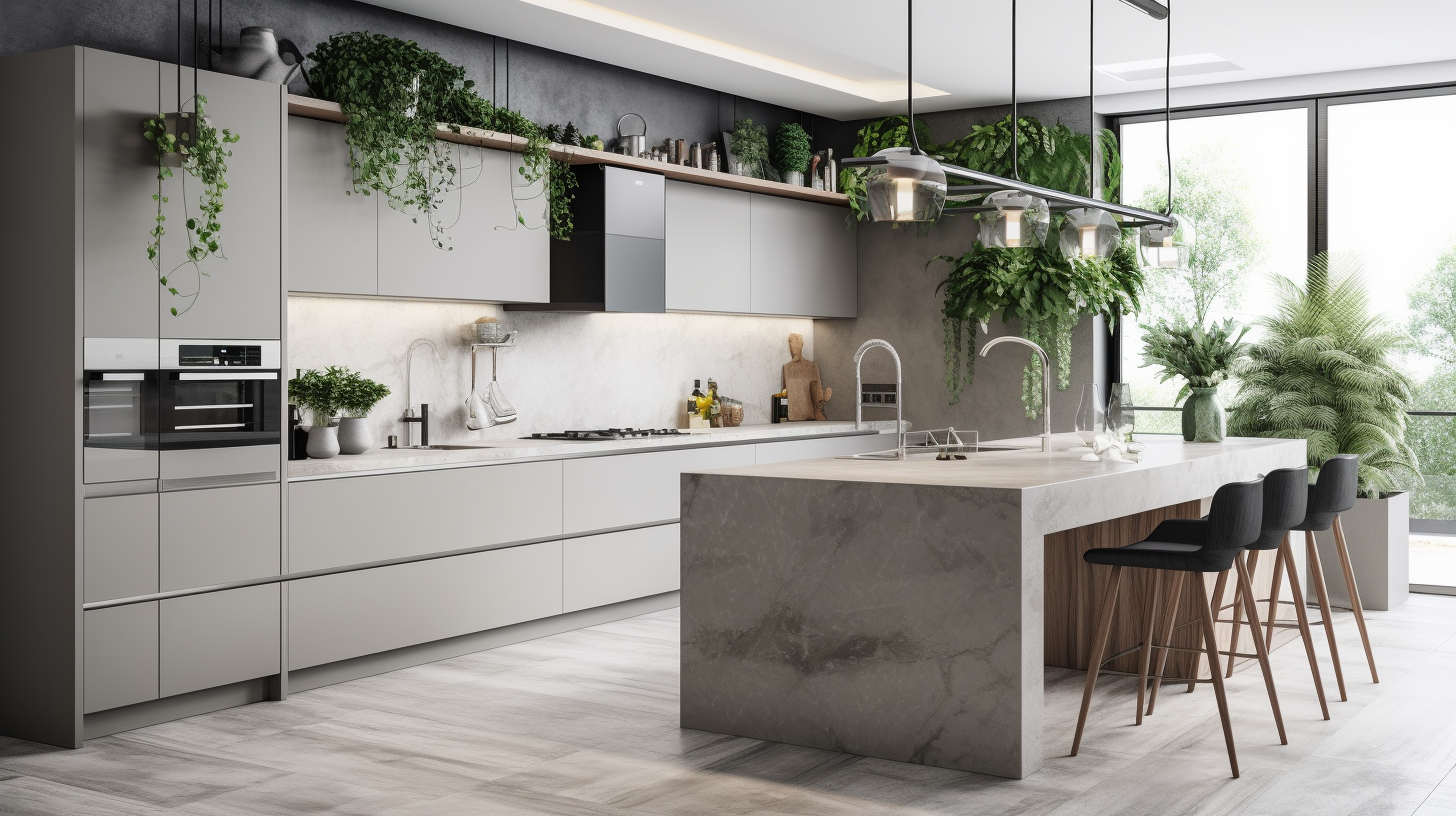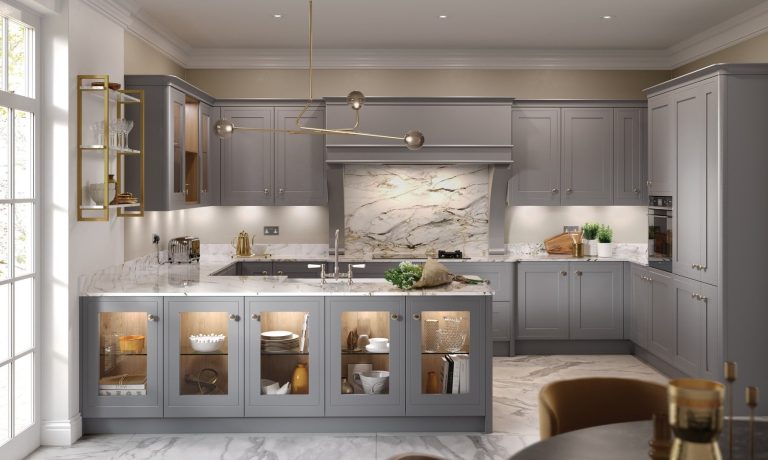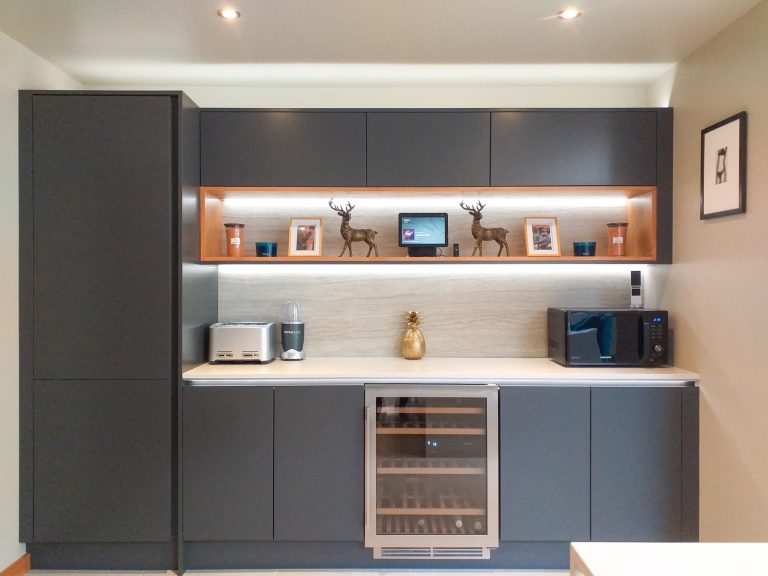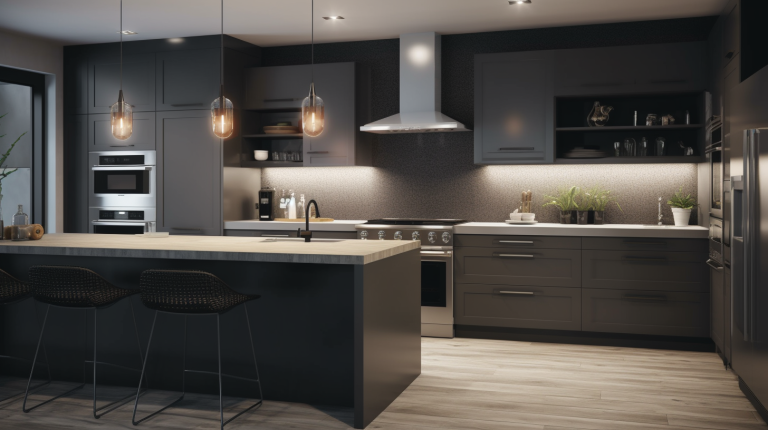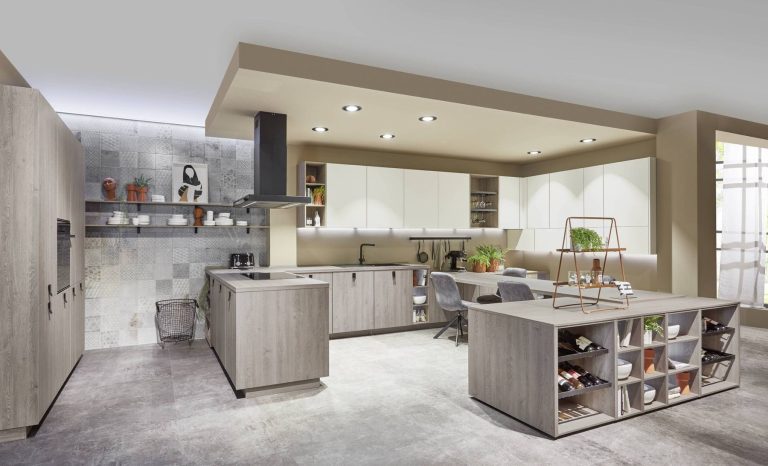Light Grey Kitchen
Light Grey Kitchens
In recent years, the prominence of light grey kitchens has gained traction, as this neutral shade effortlessly embodies a timeless elegance while providing a versatile canvas for various design styles. As a functional and stylish choice, light grey offers an array of possibilities for homeowners and interior designers to create harmonious and visually appealing spaces.
The exploration of various shades, finishes, and complementary colors in light grey kitchens paves the way for personalization, allowing one to achieve a unique and captivating aesthetic.
Moreover, the practical benefits of a neutral palette are undeniable, as it allows for seamless adaptation to changing trends and preferences. The enduring nature of light grey kitchens contributes to their widespread appeal among those seeking a sophisticated and tranquil atmosphere.
This article will delve into the versatility of light grey in design, discuss the factors involved in selecting the appropriate shade and finish, examine complementary colours and accents, and provide inspirational ideas for those considering the incorporation of this elegant hue into their kitchen space.
The Versatility of Light Grey in Kitchen Design
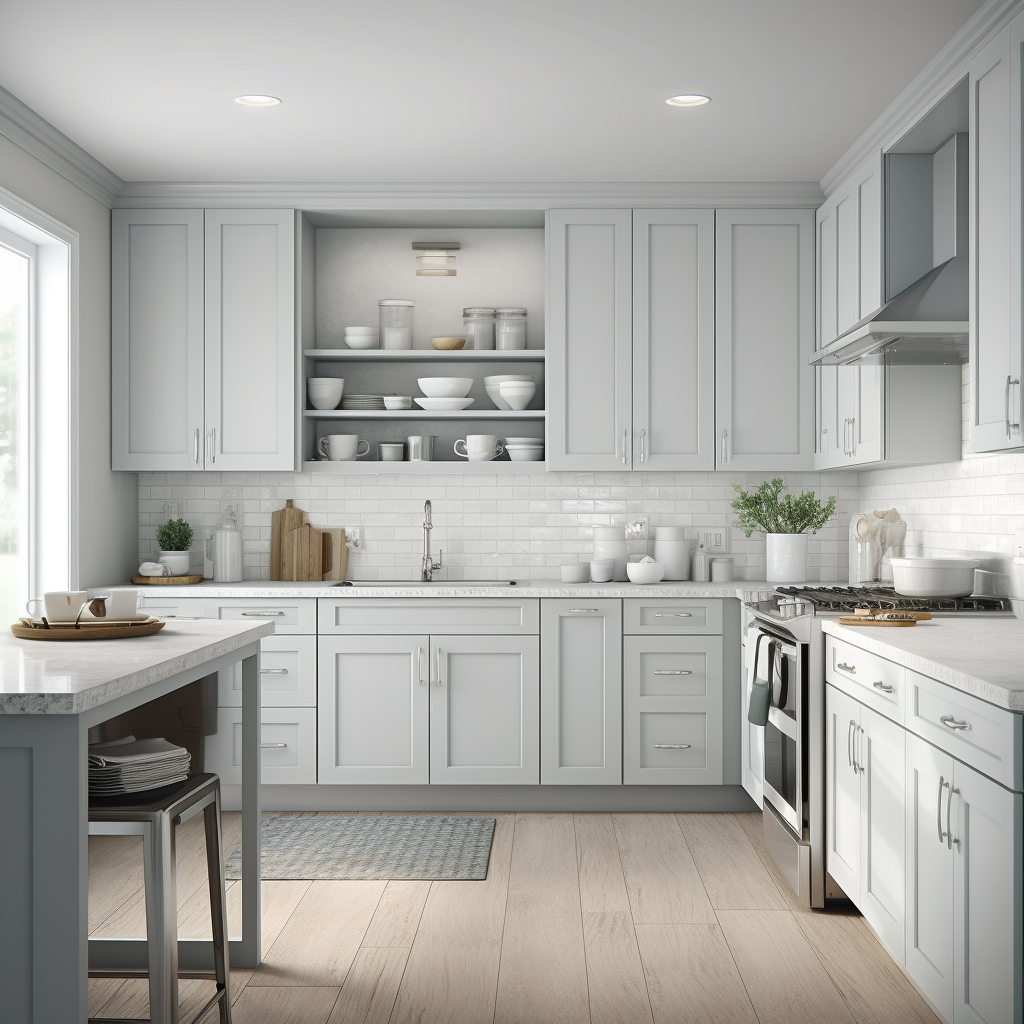
The subtle elegance of this neutral hue offers endless possibilities for customization and creativity in design schemes. Light grey serves as a versatile and sophisticated foundation in kitchen interiors, allowing other colours and textures to stand out while maintaining a sense of harmony and balance.
As a timeless colour choice, light grey can be paired with a range of materials and finishes, from sleek modern surfaces to rustic, reclaimed woods, creating adaptable styles that suit various tastes and lifestyles. Furthermore, the adaptability of this shade lends itself well to both small and large kitchen spaces, providing an ambiance of expansiveness and airiness while still retaining warmth and comfort.
Functionality and aesthetics are key considerations in kitchen design, and light grey is well-equipped to accommodate both aspects. It can be a practical choice for high-traffic areas, as it is less likely to show dirt and wear compared to lighter colours, while still reflecting a sufficient amount of light to maintain a bright and welcoming atmosphere.
Additionally, light grey’s compatibility with a range of colour palettes allows for easy updates and modifications as trends evolve or personal preferences change. Whether used as a primary base colour or as an accent in cabinetry, countertops, and backsplashes, light grey continues to prove its enduring appeal and versatility in the realm of kitchen design.
Choosing the Right Shade and Finish

Selecting an appropriate shade and finish for a kitchen requires careful consideration of various factors to achieve a harmonious and visually appealing space. The choice of light grey as the primary colour for a kitchen offers numerous options in terms of shades and finishes, each with its own unique characteristics and aesthetic appeal.
In order to make an informed decision, it is essential to evaluate the overall design concept, the size of the space, the amount of natural light, and the desired atmosphere. Additionally, the selection of complementary colours for cabinetry, countertops, and other elements within the space is crucial to ensure a cohesive and visually balanced environment.
When choosing a shade of light grey, it is important to consider the undertones and the intensity of the colour. A warmer grey with beige undertones might be more suitable for a traditional or rustic kitchen, while a cooler grey with blue undertones could be more appropriate for a contemporary or minimalist design.
The finish of the paint or material should also be carefully considered, as it can significantly impact the overall look and feel of the space. Matte or flat finishes can create a soft, understated appearance, while glossy or semi-gloss finishes can add depth, dimension, and a touch of sophistication.
Ultimately, the selection of the right shade and finish of light grey for a kitchen should be based on a thorough analysis of the space’s requirements and the homeowner’s personal preferences, ensuring a functional, stylish, and timeless design.
Complementing Colors and Accents
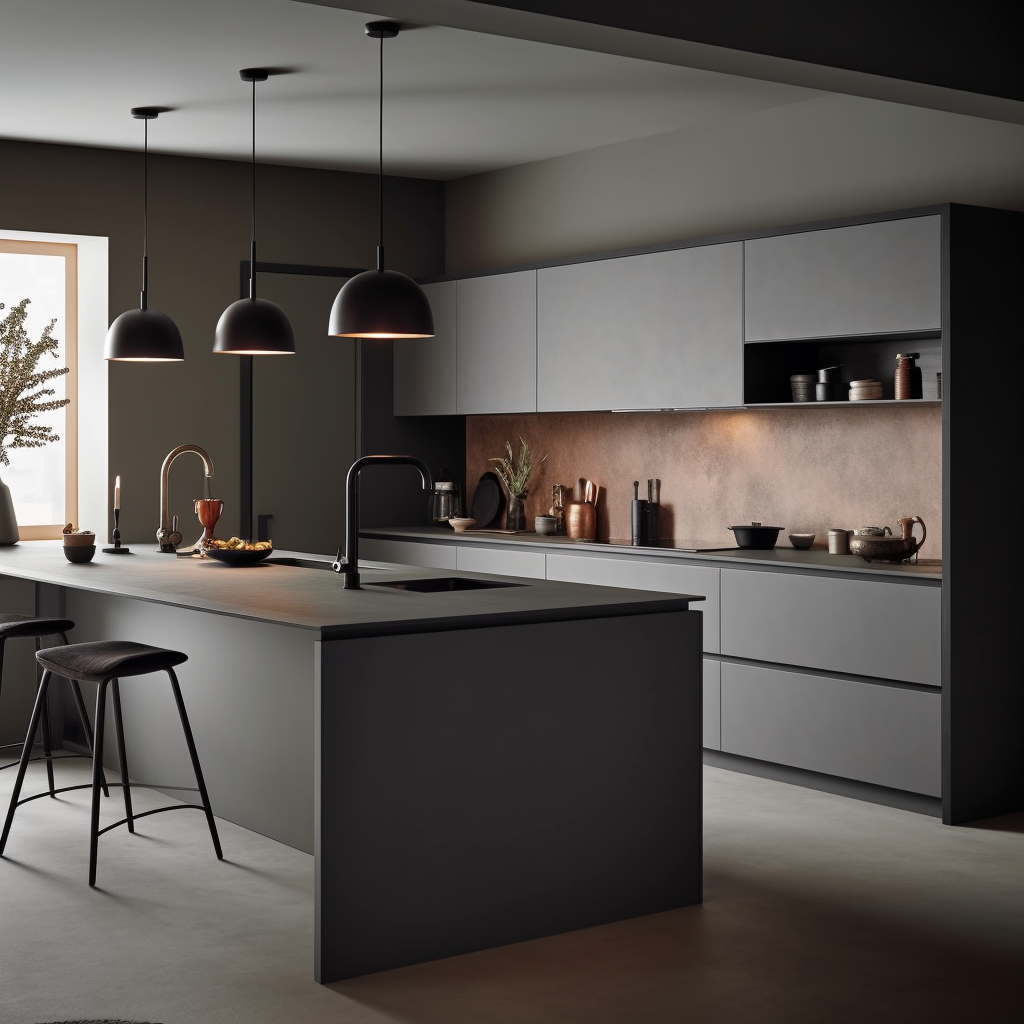
Incorporating complementary colours and accents within the space can greatly enhance its visual appeal and create a harmonious design. When designing a light grey kitchen, there are several colours and accents that can be used to complement the space and create a cohesive look. Some popular choices include cool hues like blues and greens, warm tones like yellow and beige, and contrasting colours like black and white. In addition to colour, texture and pattern can also be incorporated through accessories, textiles, and finishes to add visual interest and depth to the space.
1. Cool hues: Incorporating shades of blue and green can create a calming and serene atmosphere in a light grey kitchen. Consider using these colours in backsplash tiles, kitchen linens, or even in small appliances and cookware.
2. Warm tones: Adding yellow or beige accents can create a welcoming and inviting ambiance. These colours can be used in items such as area rugs, curtains, or decorative accents.
3. Contrasting colours: Using black and white accessories can add a touch of sophistication and create a striking contrast with the light grey kitchen. Ideas include black-and-white patterned floor tiles or a black statement pendant light.
4. Texture and pattern: Incorporating different textures and patterns will add depth and visual interest to the space. For example, a textured subway tile backsplash, patterned dishware, or a variety of textured fabrics for window treatments and seating cushions can create a dynamic and visually appealing kitchen design.
By carefully selecting complementary colours and accents, it is possible to create a functional, stylish, and timeless light grey kitchen space that will remain appealing for years to come.
Practical Benefits of a Neutral Palette
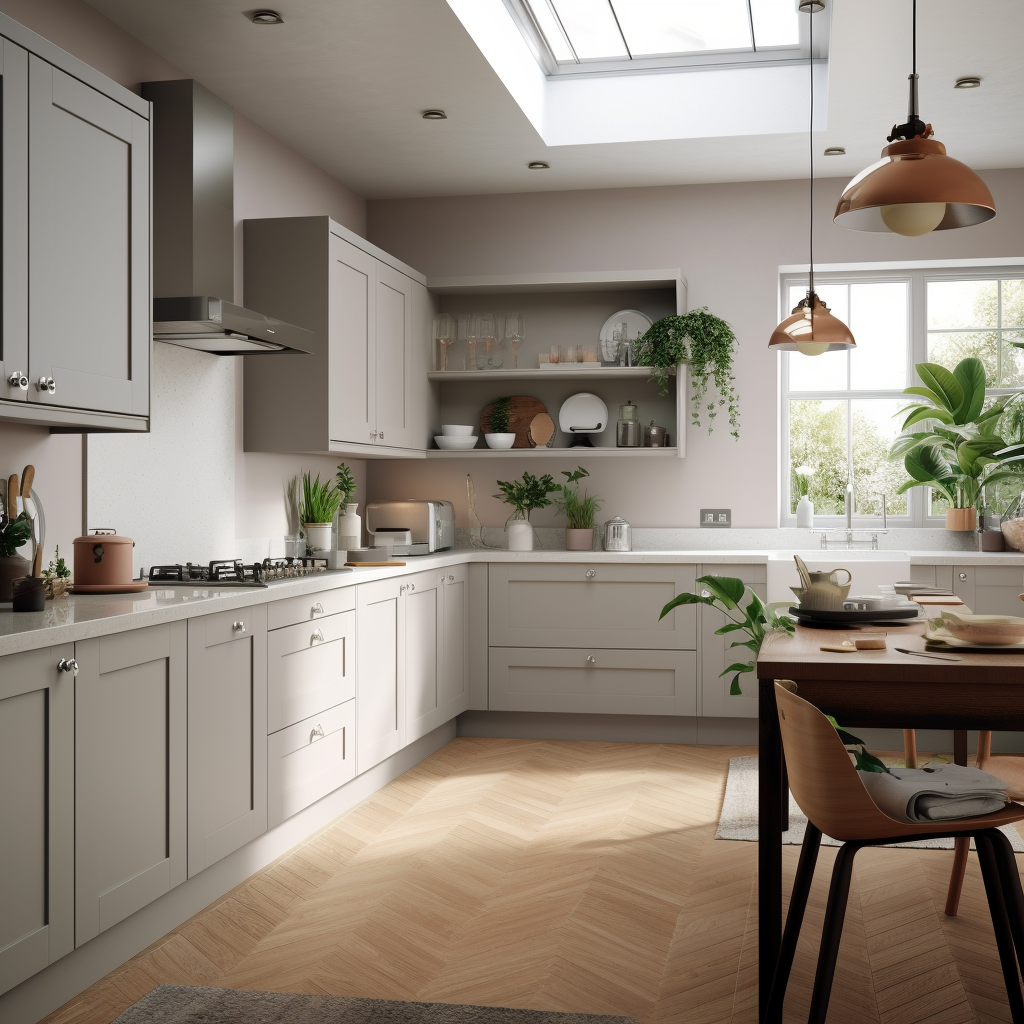
Embracing a neutral palette in your culinary space offers numerous practical advantages, enhancing both its aesthetic appeal and long-term functionality.
Neutral shades, such as light grey, provide a harmonious canvas for various design elements, allowing homeowners to create a visually cohesive and inviting atmosphere. Additionally, these understated hues can withstand the test of time, as they are less likely to succumb to the whims of fleeting design trends.
As a result, a neutral kitchen design ensures that the space remains functional, stylish, and timeless, even as homeowners’ tastes evolve over the years.
Moreover, a neutral palette’s inherent versatility enables homeowners to easily update their kitchen’s appearance without incurring significant expenses or undertaking extensive renovations. By incorporating pops of colour through easily replaceable accessories, such as dishware, textiles, and small appliances, one can effortlessly refresh the space’s overall aesthetic.
Furthermore, a light grey kitchen can adapt to various lighting conditions, with its colour appearing warmer or cooler depending on the time of day and the type of lighting used. This adaptability not only contributes to an engaging visual experience but also enhances the space’s practicality by accommodating different moods and functions.
Inspirational Light Grey Kitchen Ideas
Drawing inspiration from various light grey kitchen designs can spark creative ideas for homeowners seeking to create a visually captivating and functional culinary space.
One such design idea is incorporating contrasting elements, such as pairing light grey cabinetry with darker countertops or utilising a striking backsplash to create visual interest.
Additionally, using open shelving or glass-front cabinets can showcase elegant dishware, adding a touch of sophistication while maintaining the neutrality of the colour palette.
Furthermore, incorporating metallic accents, such as stainless steel appliances or brushed nickel hardware, can add a modern and sleek touch to the overall design, enhancing the timeless appeal of the light grey colour scheme.
Another inspirational idea for light grey kitchens is to play with different textures and materials within the space.
For instance, using grey-toned wood flooring or a grey herringbone tile pattern can create a sense of warmth and depth in the room.
Similarly, mixing materials such as marble or quartz countertops with a matte or high-gloss finish on the cabinetry can further elevate the design and add visual intrigue.
By incorporating various textures and materials, homeowners can create a versatile and stylish light grey kitchen that transcends trends, ensuring a timeless and functional space for years to come.
Conclusion
In conclusion, the utilisation of light grey in kitchen design offers a myriad of advantages, ranging from versatility in style to practical benefits. Through careful consideration of shade and finish, as well as complementary colours and accents, a functional, stylish, and timeless kitchen can be achieved.
Moreover, the neutral palette of light grey provides a solid foundation for various design elements, making it an ideal choice for homeowners seeking to create an aesthetically pleasing and enduring kitchen space.
